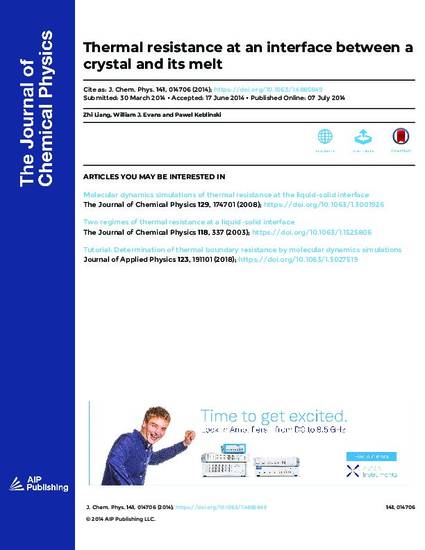
Non-Equilibrium Molecular Dynamics Simulations Are Used to Determine Interfacial Thermal Resistance (Kapitza Resistance) between a Crystal and its Melt for Three Materials Including Ar, H2O, and C8H 18 (Octane). the Simulation Results Show that the Kapitza Resistance at a Crystal-Melt Interface is Very Small and Thus Has a Negligible Effect on Thermal Transport Across the Crystal-Melt Interface. the Underlying Origins of This Behavior Are the Very Good Vibrational Property Match between the Two Materials Forming the Interface and Good Interfacial Bonding. the Result Also Indicates that the Commonly-Used Assumption that Temperature Profile is Continuous at the Crystal-Melt Interface is Valid Even in the Case of Very Rapid Crystal Melting or Growth. © 2014 AIP Publishing LLC.
Available at: http://works.bepress.com/zhi-liang/44/
